MEXICO
Economy

Economy

Cities in MEXICO
| Mexico city | Playa del carmen | Riviera maya |
Economy
General
At the beginning of the 20th century, agriculture and mining were the most important economic sectors. Silver and other metals, and later petroleum then accounted for about 75% of export earnings. The discovery of vast reserves of petroleum would become very important for the domestic energy supply, the petrochemical industry and for the foreign exchange earnings from the export of petrochemical products.
In 2017, 13.4% of the economically active population was employed in agriculture, 24.1% in mining and industry and 59.8% in trade, tourism and services. The share of these sectors in the gross domestic product (GDP) in 2017 was: agriculture 3.6%, industry 31.9% and trade and services 64.5%.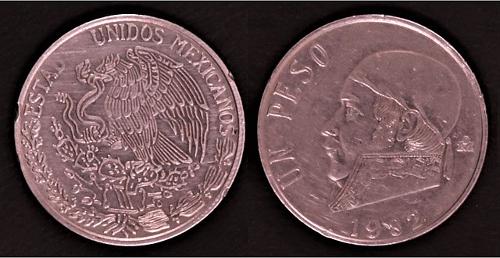 Peso, currency of MexicoPhoto: AKS.9955 CC 4.0 International no changes made
Peso, currency of MexicoPhoto: AKS.9955 CC 4.0 International no changes made
Mexico is very popular with foreign investors, especially large North American multinationals. The government still plays an important role in economic activities: in particular, the extraction of petroleum and some basic industries such as iron and steel, electrical energy, rail transport and telecommunications are in the hands of the state. Economic policy is based on cooperation between government and private industry. In recent years, entire sectors of the economy have been privatized or liberalized at a rapid pace. This mainly concerns telephony, media, roads, railways and energy generation. For political reasons, the oil sector has been excluded from privatization.
Rising revenues from oil exports laid foundations for a strong economic force in the 1960s and 1970s; the gross national product (GNP) increased on average by 6.5% per year between 1965 and 1980. In 1982, increasing inflation, a growing debt burden and a fall in oil prices led to an economic crisis, which did not improve until 1990; Between 1990 and 1995 GDP grew by an average of 1.1% per year, but picked up again afterwards (2% in 2017). Very important to the Mexican economy was the 1994 accession to the North American Free Trade Agreement (NAFTA).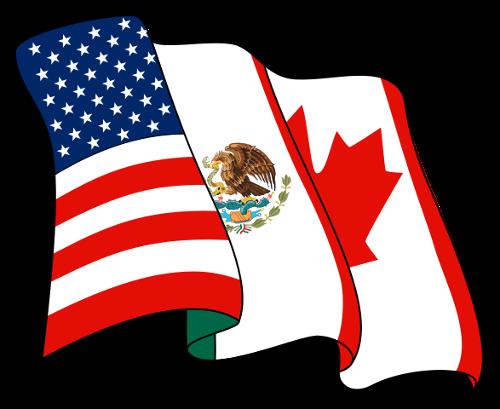 Logo NAFTAPhoto: Nicoguaro CC 3.0 Unported no changes made
Logo NAFTAPhoto: Nicoguaro CC 3.0 Unported no changes made
The number of people working in the duty-free assembly industry - the maquiladoras - exceeded the million for the first time. This sector brought in more hard currency than the oil sector or tourism.
Mexico is currently Latin America's main trading nation, and its size has surpassed the Brazilian economy. Over the past two decades, the Mexican economy has developed into a service economy.
The informal sector (including street trade, illegal employment) is large.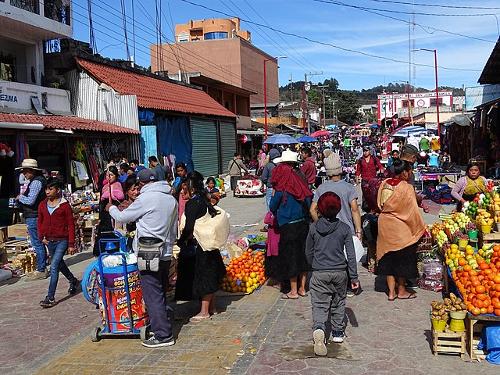 Street trade San Juan Chamula, Chiapas, MexicoPhoto: Adam Jones CC 2.0 Generic no changes made
Street trade San Juan Chamula, Chiapas, MexicoPhoto: Adam Jones CC 2.0 Generic no changes made
Agriculture, forestry and fishing
The agricultural reform at the beginning of the 20th century attempted to end large land ownership. Under President Cárdenas, a lot of land was divided among the farmers on the basis of the cooperative ejido system. This system means that the members of the cooperative may work and exploit a specific piece of land for their own account, while the land remains the property of the state. Currently, about 60% of all arable land is worked by ejido companies. The rest of the companies are smaller than 5 hectares, so that the owner hardly has enough income to be able to provide for himself.
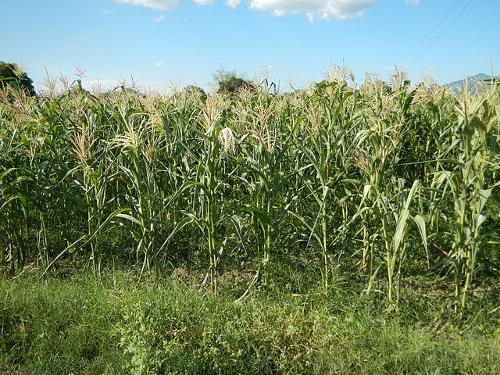 Cornfield MexicoPhoto: Judgefloro CC 4.0 International no changes made
Cornfield MexicoPhoto: Judgefloro CC 4.0 International no changes made
The agricultural land can be divided as follows:
Agricultural land 22 million ha
Pasture land 74.4 million ha
Forests 40.6 million ha
Unsuitable / not in use 40.6 million
Until the early 1980s, Mexico was able to provide almost all of its food needs and even exporte agricultural products such as vegetables, fruit and cotton. Due to a lack of credit, low prices and declining investment in agriculture, food production fell and many agricultural products had to be imported again. Self-sufficiency had to be restored by 1994. Maize is the main product (6.5 million ha) and the states of Jalisco and Veracruz are the main domestic suppliers.
Other important products are wheat (especially in Sonora), beans, cotton (Valley of Mexicali; Coahuila, Tamaulipas), coffee (third producer in Latin America; Chiapas and Veracruz) and henequén (sisal; more than 50% of world production comes from Yucatán); and further bananas, citrus fruits, tobacco, cocoa and maguey. In the north we find very modern and capital intensive farms (mostly in foreign hands) that mostly produce for export (tomatoes, fresh vegetables, fruit - strawberries - and flowers).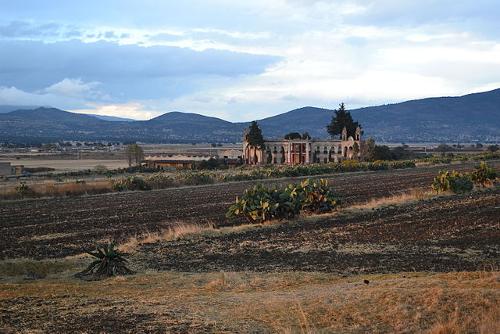 Hacienda Tlalayote, Apan, Hidalgo, MéxicoPhoto: Sergio Kasusky Pech CC 2.0 Generic no changes made
Hacienda Tlalayote, Apan, Hidalgo, MéxicoPhoto: Sergio Kasusky Pech CC 2.0 Generic no changes made
Horticulture is experiencing great development due to capital from the United States. Fifty percent of the value of agricultural exports comes from horticulture. The cultivation of vegetables with full climate control has grown from 70 to almost 500 hectares.
Cattle are mainly kept on the high plains in Northern Mexico (mainly for export to the United States) and in the Isthmus states, pigs mainly in Central Mexico, Jalisco and Michoacán. Apiculture (Yucatán) produces honey for export.
Pig production is becoming more efficient, but it is clear that only large farms with a minimum of 1000 sows can survive. At the moment there are six modern companies with 10.000 to 30,000 sows.
The forest exploitation consists of approx. 75% coniferous wood, of which a considerable part (approx. 30%) is still used as fuel (charcoal). In addition to wood, the woods and forests are an important supplier of rubber, resins, carrots, chicle (raw material for chewing gum) and candelilla wax produced. About 25 million cubic meters of wood are produced annually.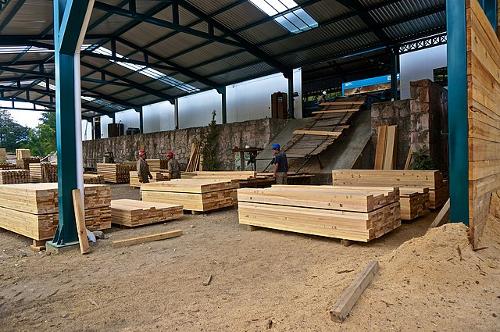 Sawmill in Oaxaca, MexicoPhoto:Oregon State University CC 2.0 Generic no changes made
Sawmill in Oaxaca, MexicoPhoto:Oregon State University CC 2.0 Generic no changes made
Fishing is becoming increasingly important; many North American companies are allowed to fish in Mexican waters, especially the Pacific Ocean and the Gulf of California, and that makes a lot of money. The shrimp catch, which is mainly exported to the United States, is important, and the catch of sardines, tuna and oysters is also important.
Mining and energy supply
Oil has been extracted in Mexico since the early 1900s and the first exports were made in 1911. The first petroleum refinery was commissioned in 1917. In 1938, the petroleum industry was nationalized and the oil was mainly used for the national energy supply, especially for industry and the transport sector.
In 1975, huge oil reserves were discovered both onshore and offshore and production has increased enormously, making Mexico a major world producer today. There are now also large-scale exports, mainly to the United States, Europe, Brazil and Japan.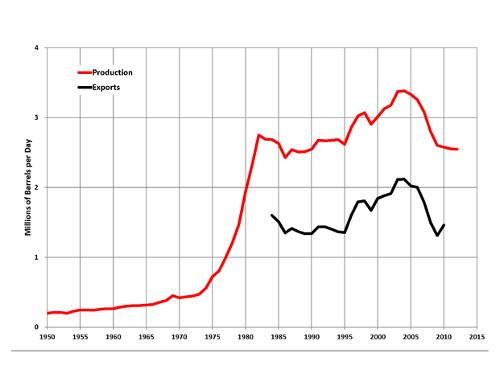 Production oil Mexico 1950-2015Photo: Plazak CC 3.0 Unported no changes made
Production oil Mexico 1950-2015Photo: Plazak CC 3.0 Unported no changes made
From 1953 a lot of natural gas has been exported to the United States. These exports were severely limited in the period 1971-1980 in order to provide the own industry with energy. The main natural gas fields are in Chiapas, Tabasco and Veracruz. Production stood at about 1.2 billion cubic feet per day in 2000.
In 1983 the Real de Angeles silver mine was opened, making Mexico the largest silver producer in the world in one all at once.
Other important metals are lead, zinc and copper (especially Chihuahua and Sonora), iron ore (including Peña Colorado basin in Colima; Las Truchas in Michoacán; and also gold and mercury (Zacatecas), tin and uranium (Sonora and Chihuahua).
Mexico is the second world producer in sulfur and Mexico is the first world producer in fluorite. Other mining products are coal, Sonorabarite, graphite and phosphorite.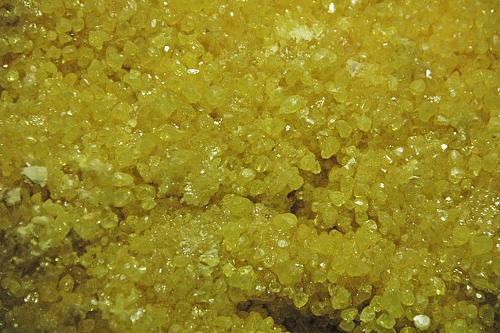 Sulfur from Baja California, MexicoPhoto: James St. John CC 2.0 Generic no changes made
Sulfur from Baja California, MexicoPhoto: James St. John CC 2.0 Generic no changes made
Hydroelectric power plants account for 71% of electricity production. 88% of electricity production takes place in state-owned companies. The largest power stations are the Infiernillo hydroelectric power stations in Río Balsas, and the La Angostura power station in Río Grijalva.
In 1988, the Laguna Verde nuclear power plant in Veracruz was commissioned on an experimental basis.
Industry
The expanding petroleum industry made it the fastest growing economic sector in the 1960s and 1970s. In the 1980s, the industry stagnated due to import restrictions and reduced demand.
Rapid industrialization after World War II has made Mexico less and less dependent on imports from abroad.
Major industries such as petroleum extraction and processing, the iron and steel industry and the production of cellulose and cement are largely in the hands of the government. Furthermore, many North American multinationals have a branch in Mexico.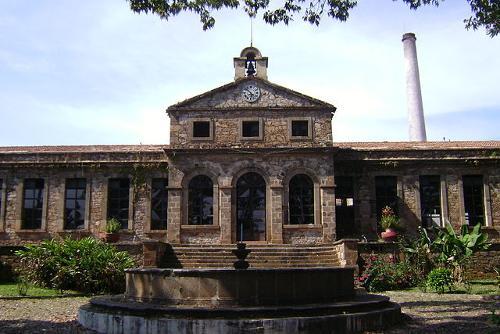 Bellavista Yarn and fabric factoryPhoto: Ray PVR CC 3.0 Unported no changes made
Bellavista Yarn and fabric factoryPhoto: Ray PVR CC 3.0 Unported no changes made
The main industrial areas are in and around Mexico City and further in the states of México, Nuevo Léon (Monterrey), Puebla, Morelos and Jalisco (Guadelajara). The many assembly factories (maquiladoras) along the border with the United States are becoming increasingly important. Foreign investors settle there because of the favorable tax and business conditions.
The petrochemical industry is growing very fast. Basic production is entirely in the hands of the state-owned PEMEX with approximately 60 different factories that have been supplying the country with petrol and diesel oil since 1974. The steel industry is very important, with more than two thirds of the production coming from the three companies within the state-owned Siderúrgia Mexicana (SIDERMEX). Cement production, which is also largely government-owned, is unable to meet domestic demand.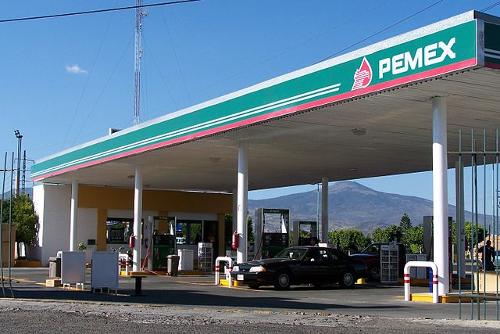 Gas station PEMEX MexicoPhoto: Unknown CC 3.0 Unported no changes made
Gas station PEMEX MexicoPhoto: Unknown CC 3.0 Unported no changes made
Monterrey is the country's second industrial center. Torreón has an important metallurgical industry. The main industrial area is formed by the State of México and the Distrito Federal. Other industrial centers can be found in Guadalajara, Veracruz and Puebla.
Trade
The main exports are petroleum and petroleum derivatives, tomatoes, coffee and cotton; furthermore, shrimp, zinc, lead, copper, fluorite, canned meat, fruit and flowers are exported. Imports are mainly means of transport, parts for the assembly industries, machines, raw materials and semi-finished products, wheat and maize.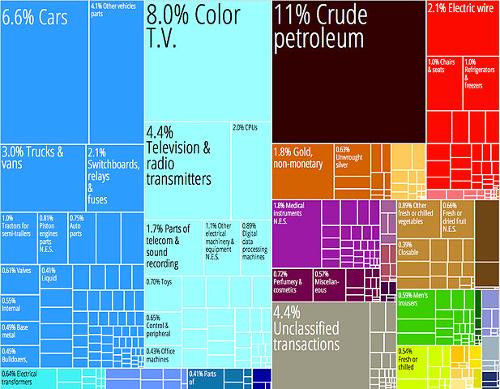 Mexico exportproductsPhoto: R Haussmann, Cesar Hidalgo, et. al. CC 3.0 no changes made
Mexico exportproductsPhoto: R Haussmann, Cesar Hidalgo, et. al. CC 3.0 no changes made
The main trading partner is the United States and furthermore the European Union (including Germany, Spain, Italy, Great Britain and the Netherlands), a number of Latin American neighboring countries, Canada, South Korea, China and Japan. In 1992, a free trade zone (NAFTA) was agreed with the United States and Canada. Agreement was also reached with Colombia and Venezuela to create a free trade zone in 1994. Imports were $ 421 billion in 2017 and exports were $ 410. The trade balance is therefore virtually neutral.
Traffic and transport
Since 1952, road transport has been more important for transport than rail transport. The total road length is over 400,000 km, of which 50% is asphalted. About 95% of passenger transport and 80% of freight transport takes place by road. The main road connections are part of the Interamerican road network (Carretera Interamericana, Carretera Central, Carretera del Pacifico).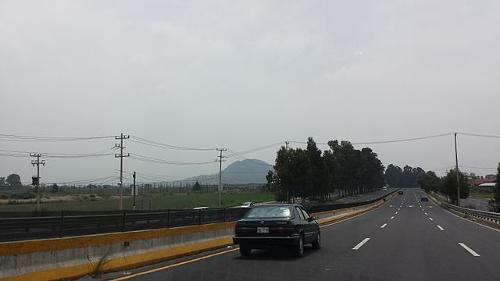 New highway Chalco Puebla, MexicoPhoto:Arps9311 CC 4.0 International no changes made
New highway Chalco Puebla, MexicoPhoto:Arps9311 CC 4.0 International no changes made
Mexico City is the hub of the 26,000 km long rail network, which has been largely state-owned from 1937 till 1998 (Ferrocarriles Nacionales de México or N de M).
One of the most beautiful train routes in the world: the Ferrocarril Chihuahua al Pacífico (Chepe), which connects Los Mochis, on the Pacific Ocean, with Chihuahua. The Chihuahua al Pacífico railway has a length of 653 kilometers and runs through northwestern Mexico, passing no fewer than 87 tunnels and 37 bridges. The highest point of the route is at 2,424 meters above sea level.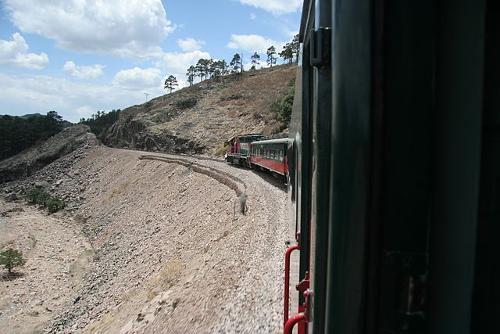 Ferrocarril Chihuahua al Pacífico (El Chepe), MexicoPhoto: Interspectrum assumed CC 2.5 Generic no changes made
Ferrocarril Chihuahua al Pacífico (El Chepe), MexicoPhoto: Interspectrum assumed CC 2.5 Generic no changes made
Despite the great length of the coastline (almost 10,000 km), Mexico has few good seaports, seventy in all. The main ports on the Gulf of Mexico are Tampico, Coatzacoalcos (mainly coastal shipping) and Veracruz. The main ports on the Pacific Ocean are: Lázaro Cárdenas, Salina Cruz, Puerto Ensenada and Santa Rosalía. Founded in 1958, the national shipping company Transportación Marítima Mexicana is increasingly involved in international shipping. Inland shipping is relatively unimportant. Coatzacoalcos (Puerto México), Salina Cruz and Topolobampo are free ports. The port of Altamira has become one of the most important ports in Mexico with an area of 9,573 hectares. The port is located about 300 kilometers south of the United States and a huge industrial and port complex is developing there.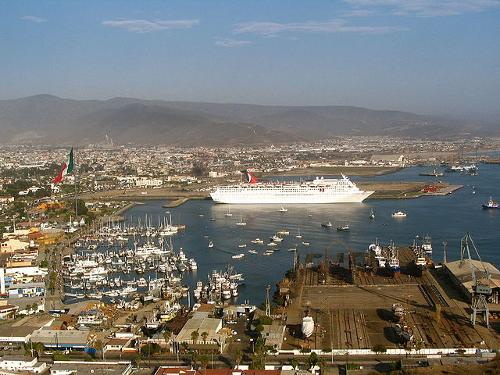 Puerto Ensenada, MexicoPhoto: Cesar bojorquez from Tijuana, Mexico CC 2.0 Generic no changes made
Puerto Ensenada, MexicoPhoto: Cesar bojorquez from Tijuana, Mexico CC 2.0 Generic no changes made
Mexico has 1200 airports, of which 28 are for international traffic (including Mexico City, as te the largest, Monterrey, Tampico, Acapulco, Tijuana, Veracruz, Cancún, the second largest, Mérida, Guadalajara and Mazatlán).
Aerovías de México, S.A. de C.V. operating under the name Aeroméxico (stylised as AEROMEXICO), is the national airline of Mexico, based in the capital Mexico City. Aeroméxico operates scheduled services to more than 90 destinations in Mexico, North, South and Central America, the Caribbean, Europe and Asia.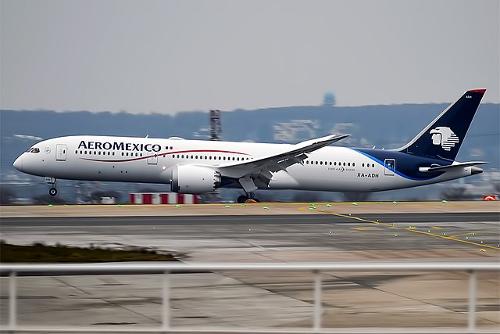 Boeing 787-9 Dreamliner of AeroméxicoPhoto: Anna Zvereva from Tallinn, Estonia CC 2.0 Generic no changes made
Boeing 787-9 Dreamliner of AeroméxicoPhoto: Anna Zvereva from Tallinn, Estonia CC 2.0 Generic no changes made
The country has an extensive network of pipelines for the transport of oil and natural gas.
Sources
Daling, T. / Mexico : mensen, politiek, economie, cultuur, milieu
Koninklijk Instituut voor de Tropen / Novib
Dunlop, F. / Mexico
Van Reemst,
Mexico
Cambium
Rokebrand, R. / Mexico
Gottmer/Becht
Rummel, J. / Mexico
Chelsea House Publishers
Wagenvoort, E. / Reishandboek Mexico
Elmar
CIA - World Factbook
BBC - Country Profiles
Copyright: Team The World of Info